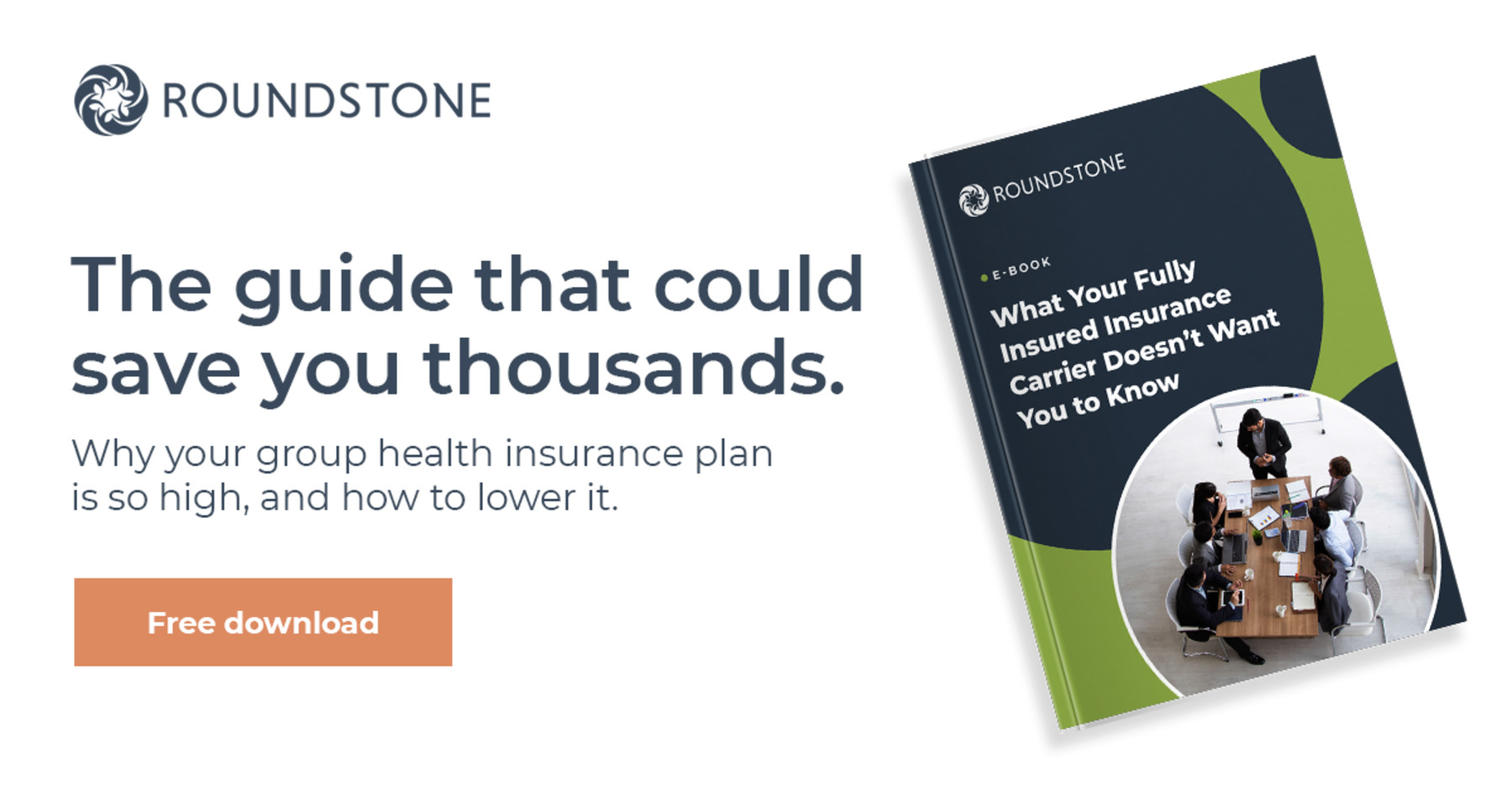Highlights
- Health insurance costs are increasing annually for employers and their health plan members.
- Most insurance premium increases are due to rising pharmacy costs, government regulations, and insurance company profits.
- Self-funded insurance on a group captive model can help small and medium-sized businesses save on expensive healthcare costs with flexible plan design and cost containment solutions.
The United States has experienced a significant increase in healthcare insurance costs over the past decade. According to the Kaiser Family Foundation (KFF), the average annual premium for employer-sponsored family health coverage reached $23,968 in 2023. Family premiums have increased 20% since 2018 and 43% since 2013.
So if you’re wondering, “Why did my health insurance premium double this year?”, you’re not alone. Faced with double-digit increases, many are asking this very question.
If your company has a fully insured healthcare plan, knowing the reasons behind these cost increases can help you decide whether a more cost-effective solution, such as self-funded insurance, is right for you.
What are the Reasons for Health Insurance Cost Increases?
Why is health insurance so expensive? There are many reasons for the increase in health insurance costs, ranging from medical inflation to technological advances. Inflation, administrative costs, and government regulations also contribute to the rise in average health insurance costs.
Medical Inflation
The cost of medical care, including services provided as well as insurance, drugs, and medical equipment, has increased by 114.3% since 2000. In contrast, prices for all consumer goods and services rose by 80.8% in the same period.
While medical care prices have usually grown faster than prices in the overall economy, they have also grown more consistently year-over-year. In June 2023, medical prices grew by only 0.1% from the previous year, below the 3.0% overall annual inflation rate.
As wages go up due to inflation, many healthcare providers are increasing the prices of medical services to pay their staff’s salaries. Coupled with higher demand for medical care post-pandemic, increased healthcare use has also driven up health insurance costs.
Aging Population
There are around 56 million Americans aged 65 and over currently in the U.S. This number is projected to increase to about 94.7 million by 2060. Older adults are more likely to suffer from chronic conditions such as hypertension, diabetes, and heart disease, which make this growing demographic a factor affecting the spike in healthcare costs.
The prevalence of chronic health conditions among older adults is around 85%, and 60% have two or more chronic health conditions. Managing multiple chronic conditions and disabilities places greater financial demands on the healthcare system. Chronic diseases require lengthy treatment periods and increase demand for healthcare services.
Technological Advances
Introducing new, innovative healthcare technologies can result in better — but more expensive — procedures. Studies show that advanced medical technology accounts for about 38% to 62% of the increase in healthcare insurance costs over time.
It may also lead to side effects and complications requiring further tests and treatments. Life-extending technologies may require more prolonged periods of care, often at a high cost and in an institutional setting.

Administrative Costs and Overhead
Healthcare in the United States relies on market-based solutions, including competing insurers and healthcare organizations negotiating for the best prices. Prior authorization and higher patient cost sharing by insurance companies force healthcare organizations and medical practices to adjust their service models and collect fees from patients.
These additional activities and expenses add to the overall administrative costs of the healthcare system and contribute to the rising cost of health insurance.
Profit Margins
The rising prices that health insurers pay for services from hospitals and physicians drove recent increases in commercial health insurance premiums. This limited price sensitivity among insurers results from price insensitivity among consumers and employers.
Healthcare providers with significant market influence can use the threat of not joining an insurer’s network to maintain their patient base. To keep these providers in network, insurers may agree to pay higher reimbursement rates. However, instead of these reimbursements coming out of insurance company funds, carriers increase premiums to cover the cost.
Risk Pooling
A health insurance company’s premium prices are based on the risk pool. The risk pool combines the medical costs of a group of individuals to determine premiums, especially in large risk pools, by balancing higher costs with lower prices for those who are less healthy.
However, a large risk pool with many unhealthy members may increase premiums. For example, including retirees in the same risk pool as active employees could increase premiums for all due to the higher risks and costs associated with insuring older individuals.
The advantage of self-funding in a group captive is your risks are spread out among a wider pool. High-cost individuals are offset by healthier members, so the overall cost to insure them becomes less.
Government Regulations and Policies
The Affordable Care Act (ACA) significantly impacts health insurance costs, especially for individuals with private health insurance. If someone is ineligible for the ACA’s premium subsidies, they may be required to pay high prices for their coverage. For example, as premiums increased in 2018, around 1.2 million people who did not receive subsidies dropped their insurance coverage from the Marketplace.
Hospitals and insurance companies have been the major beneficiaries of the recent increase in spending. Hospitals experienced decreased uncompensated care, while insurance companies made significant profits from the expansion.

Why Self-Funded Insurance is More Affordable
Self-funded employer health insurance allows you to gain greater control over increased medical costs. By self-funding employee health insurance, your business can cover the healthcare claims of employees on its own and avoid fixed insurance premiums and annual increases. A self-insured approach allows for the customization of your health plan according to your company’s needs.
Flexible Plan Design
When you choose self-funded insurance, you can customize it to suit your workforce demographics. By designing your own plan, you can offer your employees direct savings and empower them to make healthcare decisions that benefit the entire group.
Your self-funded insurance plan can use wellness incentives and include telehealth coverage, or you can choose to incentivize primary care over urgent care to provide higher-quality, less-expensive coverage.
Risk Sharing
Self-funding allows you to use risk sharing to benefit from a self-funded plan while minimizing risk. By self-insuring on a group captive model, you gain control over benefit design and minimize risk as you pay for your employees’ claims up to your custom deductible. After paying for your employees and their families’ claims up to your customized deductible, you offset risk by pooling with other members in your group captive for claims exceeding the deductible. You also minimize risk by transferring high-cost catastrophic events to stop-loss insurance.
Cost Savings
When you self-fund your employee health insurance, your business keeps any unspent premium funds. This can result in thousands of dollars your company can use to fund additional benefits or pay premiums for the next coverage period.
In a high claims year, you are protected by the pool’s performance and still receive money back from an unspent captive premium. Additionally, you are not subject to an excessive premium increase from a fully insured carrier if you experience one bad year.
Data Transparency
Data transparency is an advantage of self-funding that allows you to access your claims data and spending in real time, enabling you to make changes to your plan as needed and get ahead of costly trends. Using a claims data and analytics tool to help you discover how much health insurance costs and work with your advisor to implement real-time cost-saving solutions.
Save on Health Insurance Cost with Roundstone
Roundstone’s group captive self-funded insurance plans help your small or midsize business reduce healthcare insurance costs. With Roundstone, you can design your healthcare plan with your employees’ input, enabling you to select the best healthcare options for their needs.
Contact us today to explore how to save on healthcare costs while engaging your employees in their insurance plans.













